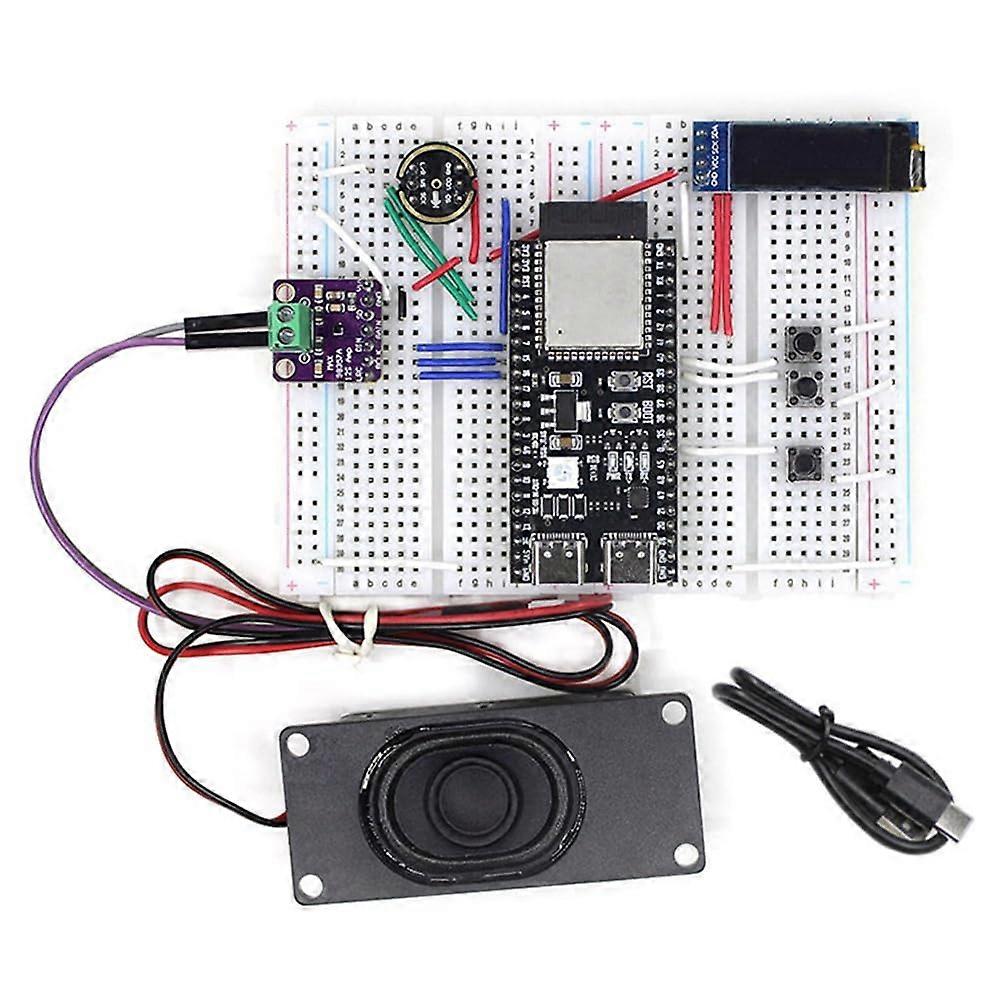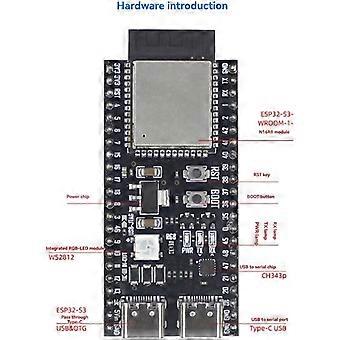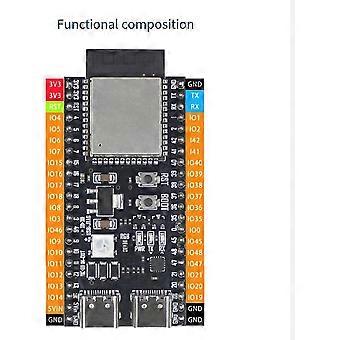설명
The ESP32S3 MCU combines advanced AI acceleration, extensive I/O, strong security, and reliable wireless connectivity to enable intelligent edge devices with performance yet powerefficient operation.
Key benefits
Ondevice AI and signal processing: Vector instructions accelerate neural network calculations and signal processing, enabling efficient image recognition, voice wakeup and recognition, and other AI workloads. Supported by ESP and ESPNN libraries, with ESPWHO and ESPSkainet also benefiting from this feature.
Flexible and rich I/O support: 45 programmable GPIOs and a wide range of common peripheral interfaces provide broad compatibility for sensors, actuators, and interfaces. Includes SPI, I2S, I2C, PWM, ADC, UART, SD/MMC host controller, and TWAI controller, with 14 GPIOs configurable as capacitive touch inputs for humanmachine interaction. An ultralow power coprocessor (ULP) enables multiple lowpower modes for energysensitive applications.
Robust security architecture: Comprehensive protection for IoT devices, including flash encryption based on the XTS algorithm, secure boot, digital signatures, and HMAC. The World Controller module adds two noninterfering execution environments to support trusted execution or privilege separation.
Integrated wireless connectivity and performance: 2.4 GHz WiFi (802.11 b/g) with 40 MHz channel bandwidth and a lowpower Bluetooth 5 (LE) subsystem with Bluetooth Mesh. Supports 2 Mbps PHY for higher data throughput and longrange communication via coded PHY and broadcast extension. Stable performance under elevated temperatures.
What makes it stand out
performance AI capability on a lowpower MCU, enabling ondevice inference without offloading to the cloud.
Broad hardware compatibility with ESPWHO for vision and ESPSkainet for AI inference, plus ESPNN library support for neural networks.
Securityfirst design with multiple layers of protection, including a trusted execution environment via the World Controller.
Comprehensive peripheral ecosystem and humanmachine interaction options through capacitive touchcapable GPIOs.
Key specifications and capabilities
AI acceleration: Vector instructions for neural networks and signal processing; accessible via ESP and ESPNN libraries; compatible with ESPWHO and ESPSkainet.
IO and peripherals: 45 programmable GPIOs; SPI, I2S, I2C, PWM, ADC, UART; SD/MMC host controller; TWAI controller; 14 GPIOs configurable as capacitive touch inputs; ultralow power coprocessor (ULP) with multiple lowpower modes.
Security: Flash encryption using XTS algorithm; secure boot; digital signatures; HMAC; World Controller module enabling two noninterfering execution environments for trusted execution or privilege separation.
Wireless and performance: 2.4 GHz WiFi (802.11 b/g) with 40 MHz bandwidth; Bluetooth 5 (LE) with Mesh support; 2 Mbps PHY; designed for stable operation under temperatures.
Practical use scenarios
Edge AI devices: Deploy ondevice image recognition, voice wakeup, and realtime signal processing for smart cameras, voiceenabled appliances, or wearable devices, reducing latency and bandwidth use.
Smart home and consumer electronics: Use capacitive touch inputs for intuitive HMIs, wireless control, and secure firmware updates in devices such as smart hubs, set boxes, and home assistants.
Industrial IoT and sensors: Run local ML inference and robust communication over WiFi and BLE in harsh environments, with strong security guarantees and flexible peripheral integration for sensors, actuators, and edge gateways.
Compatibility and development
API and library support: ESP and ESPNN libraries for AI workloads; ESPWHO for visionbased applications; ESPSkainet for AIenabled voice processing.
Platform integration: Designed to work within existing ESP32S3 ecosystems and toolchains, with broad peripheral and connectivity support to simplify integration into diverse products.
-
Fruugo ID:
409754587-867662382





